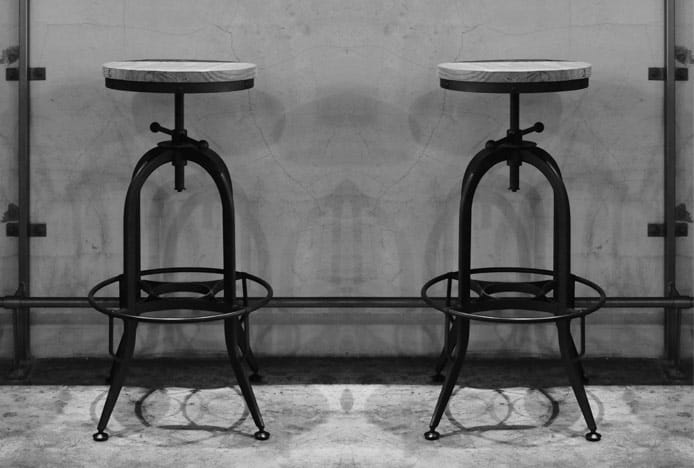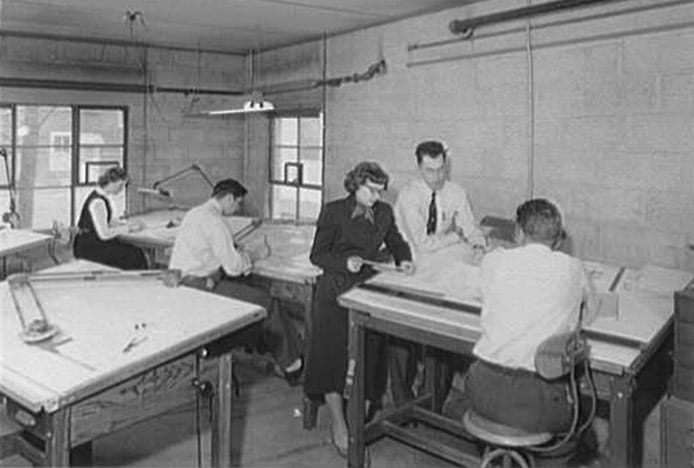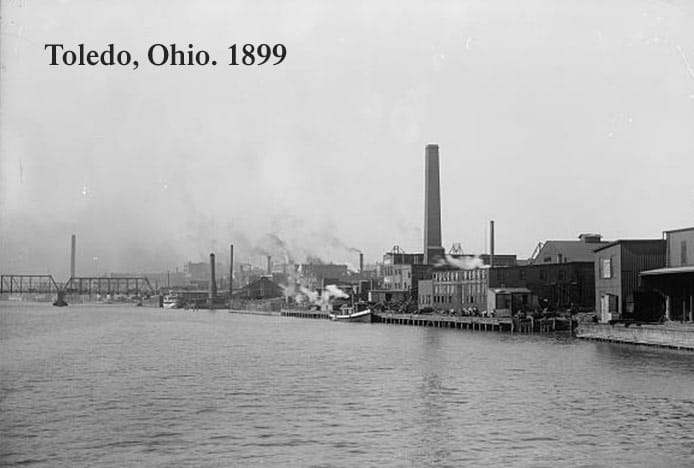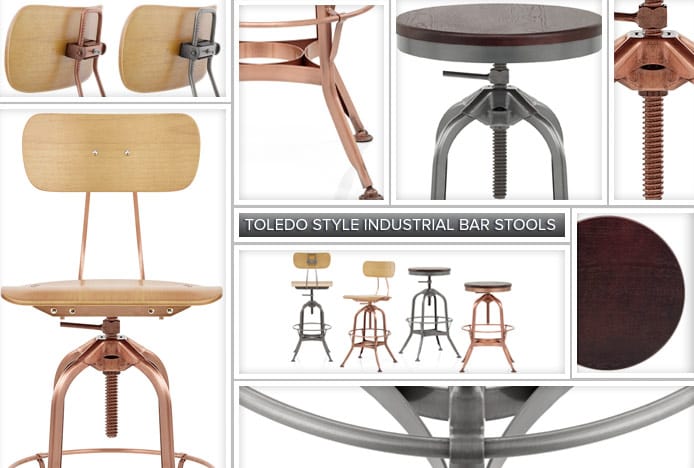What Do We Mean By Toledo?
By Sophie Hardy, 23rd August, 2017
We recently introduced two new lines to our industrial bar stool collection, both of which feature the name ‘Toledo Style Stool’. You might recognise the name, or maybe the design looks familiar, but what exactly is the Toledo Stool and where did it come from? This article explains all.

The Toledo Stool is the original draughtsman’s stool. It was manufactured in Toledo, Ohio during the American Machine Age in the early 20th century, and so the stool later adopted the city’s name.
Advertised as a chair for the office, to be used by the likes of bookkeepers and typewriters, the stool was originally created for draughtsmen. A draughting company had approached a furniture manufacturer and requested a new design of seating that would be functional and adjustable for their workers.
Draughtsmen create detailed technical drawings and plans for architects or engineers. In the past, they sat at large wooden drawing boards or desks using tools such as pencils, rulers, compasses and protractors to create plans by hand. So to make a more efficient and comfortable work flow, an adaptable and durable stool was needed, to allow them to reach the entire drawing board with ease and to accommodate multiple users.

Who created it?
The above-mentioned furniture manufacturer was the Toledo Metal Furniture Company, founded in 1898 in Toledo, Ohio by brothers Philip and Clement Uhl. Situated next to the Maumee River and Lake Erie, the city’s main transport links were by boat. Then in the late 19th century extensive railroads were developed, providing better links and turning the city into a hub for railroad companies and the manufacturing industry.
Hence the furniture company began as Uhl’s Cycle Emporium, where the brothers repaired and manufactured bicycles. However, with the development of automobiles in the early 20th century the market for bicycles saw a heavy decline. So, the brothers decided to branch out and began making chairs and stools for ice cream parlours, which expanded into furniture for schools, offices, and factories. Thus, the company was renamed Uhl Steel Art and in 1904 they incorporated as Toledo Metal Furniture.
Today, the company is a division of Banner Metal Inc., they’re still producing office furniture but much more modern variations. Their original draughtsman’s stool remains their most successful and well-known design, and today we know it as the Toledo Draughtsman’s Stool.

What does it look like?
The stool is characterised by its heavy steel frame, with what the Uhl brothers referred to as the ‘locked truss-rail legs’. Forming the distinctive frame, cold rolled steel is used to create the curved bracing bars between the legs, and then a circular footrest surrounds them. The original frames also had a Japanned metal finish, which has a marbled matt black look, and then nickel, bright copper and bright brass finishes became available in later years. Plus, they added steel swivel feet to their later designs, allowing for use on uneven floors with their ball and socket mechanism.
Originally made from bent plywood, the seat and backrest are curved and contoured in an effort to provide comfort to the user. The height of the seat can be adjusted by swivelling the seat, whilst the height of the backrest can also be adjusted and has a tilt function. These elements were combined to offer practicality, efficiency, and comfort, meeting the requirements of the draughting company and the needs of so many others thereafter.

How is it relevant now?
The Toledo Stool, and this style of steel furniture in general, fell out of fashion in the second half of the 20th century as more sleek and comfortable designs became popular. This was partly due to the increasing use of new materials in furniture, such as plastic. Plus, the traditional techniques used by draughtsmen were overtaken by CAD (computer aided design) and accompanied by more supportive, cushioned, and ergonomic furniture.
Today the Toledo is seeing a revival, as the vintage industrial look is on trend in domestic and commercial interior design. Now you will find its varying designs being used in the home as bar stools at the kitchen island or breakfast bar, and it is also a popular choice for commercial bar areas due to its robust and solid design. It may be seen in a factory-style home office, but it’s very unlikely to be seen in the workplace.
Its return has seen dozens of new adaptations with modern finishes like bright coloured paint, plastic, and brushed copper, along with wheeled versions and backless designs. We offer two designs, the Fuse and the Volt, in two different finishes, which can be seen below:
-
 Fuse Toledo Style Antique Steel
Fuse Toledo Style Antique Steel -
 Volt Toledo Style Copper
Volt Toledo Style Copper -
 Fuse Toledo Style Copper
Fuse Toledo Style Copper
All great fashions make a comeback at some point, and right now with the popularity of factory-style décor and vintage inspired design, it’s like a second industrial revolution for the furniture trade. As the Toledo is often thought of as the original industrial piece it can be found just about anywhere at the moment, from kitchens to cafes, although not everyone realises its origin. Suiting almost any style from rustic to modern, it’s now more of a statement piece used to add character or contrast to its surroundings. So, why not try out this time-honoured design for yourself? Or browse our complete industrial bar stool range below.
Recommended Articles
Add Versatility with Coloured Stools
From funky purple to cream, we've added a range of new colours to our range..
Interesting New Bar Stools
Meet the latest fabulous additions to our stylish range of bar stools..
New Styles of Bar Stools
Allow us to introduce three of our latest fabulous bar stool designs..
Launch of Purple Bar Stools
A fabulous colour with a cool, funky aesthetic, purple is just perfect..
Recent Popular Posts
6 Ways to Use Texture in Your Kitchen
Six easy ways that you can use texture to liven up your kitchen design..
How to Brighten up a Dark Kitchen
Whether your kitchen's a small space, or just poorly lit, brighten it up in 5 steps..
3 Easy Steps to Scandinavian Style in Your Home
Featuring natural materials, clean lines and light spaces, Scandi style is clean and cosy..
How to Create a Cosy Corner in Your Home
Staying in is the new going out! Pop the kettle on and relax in a cosy corner..













